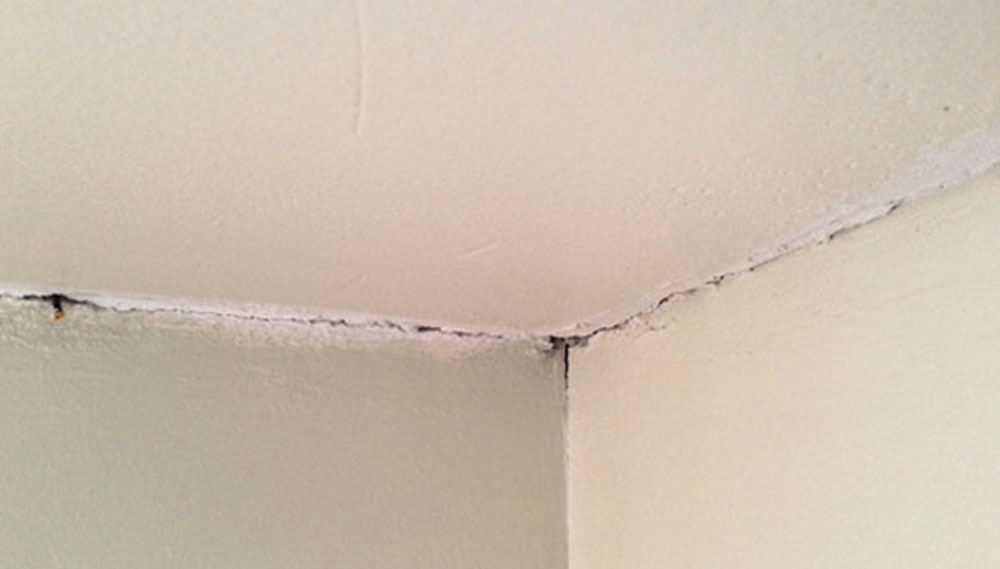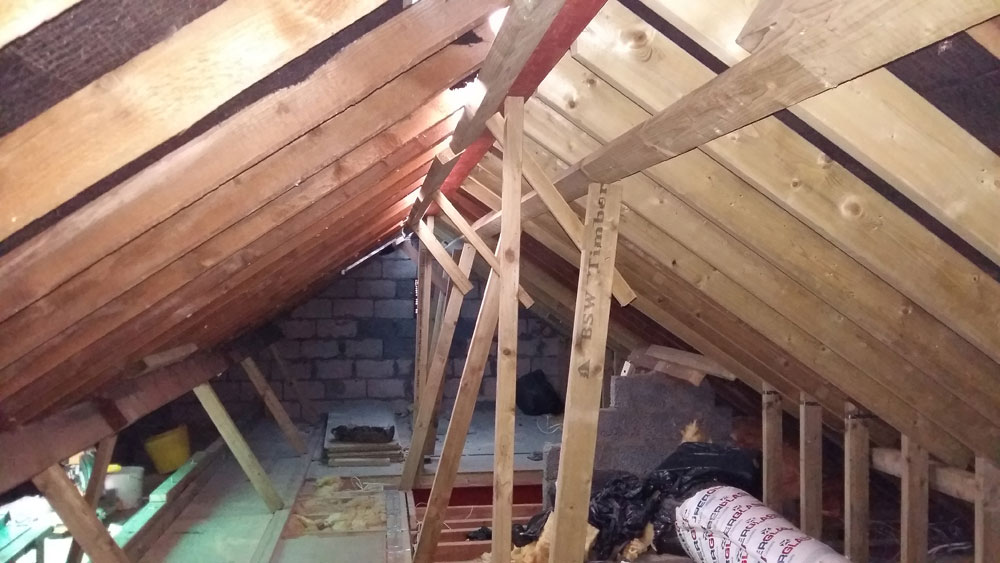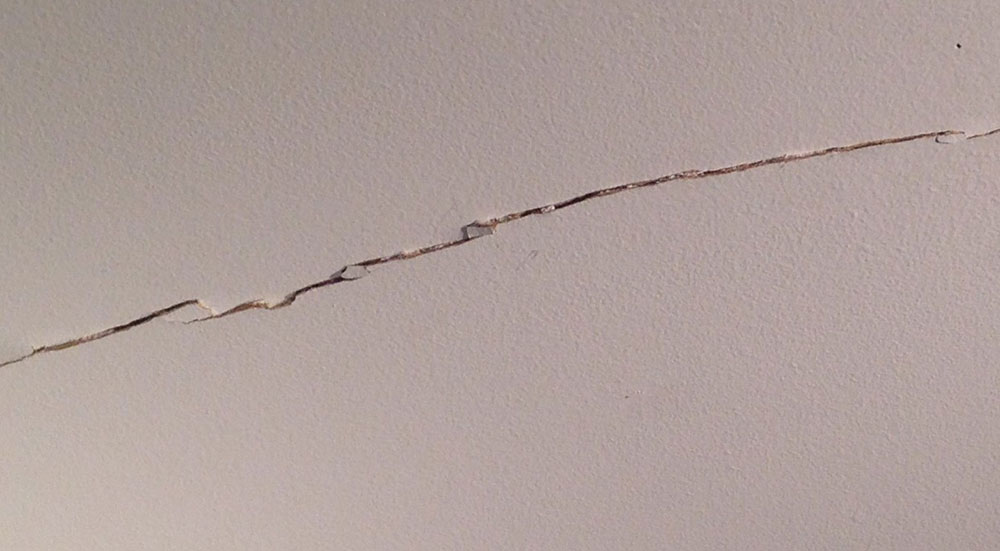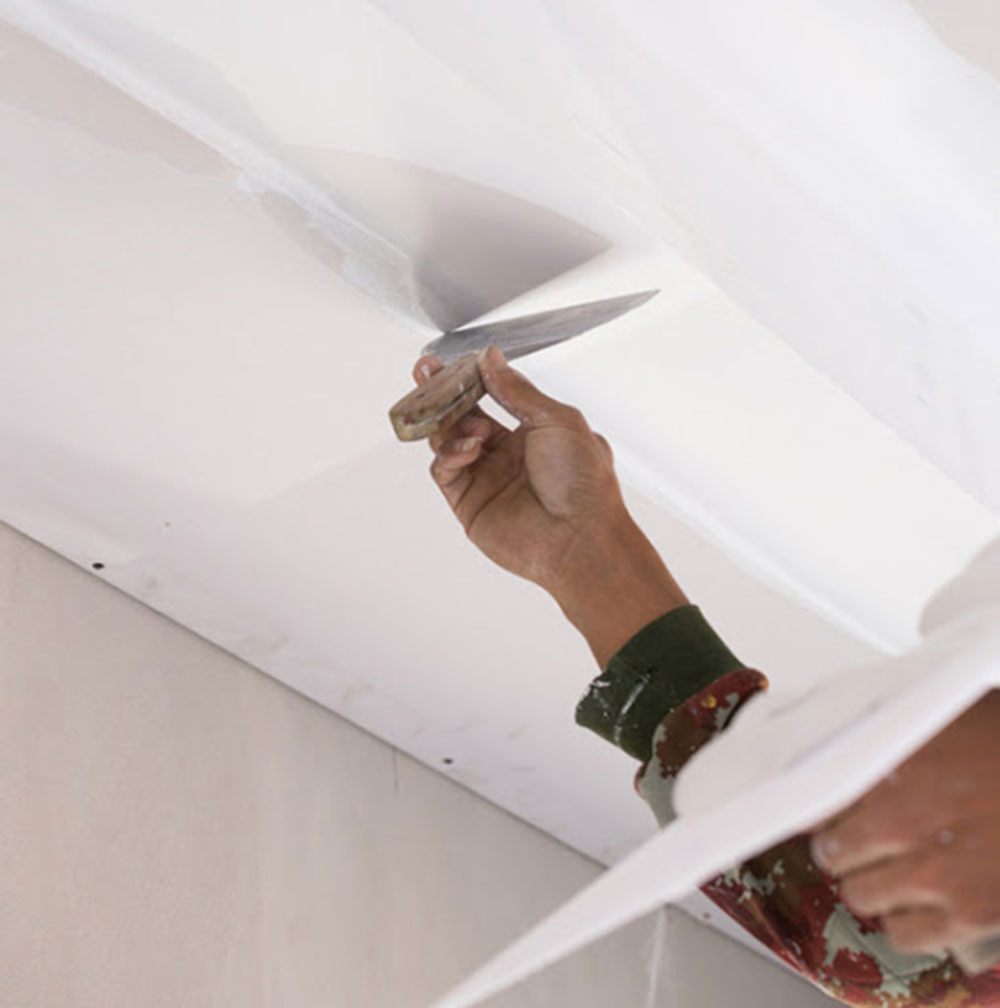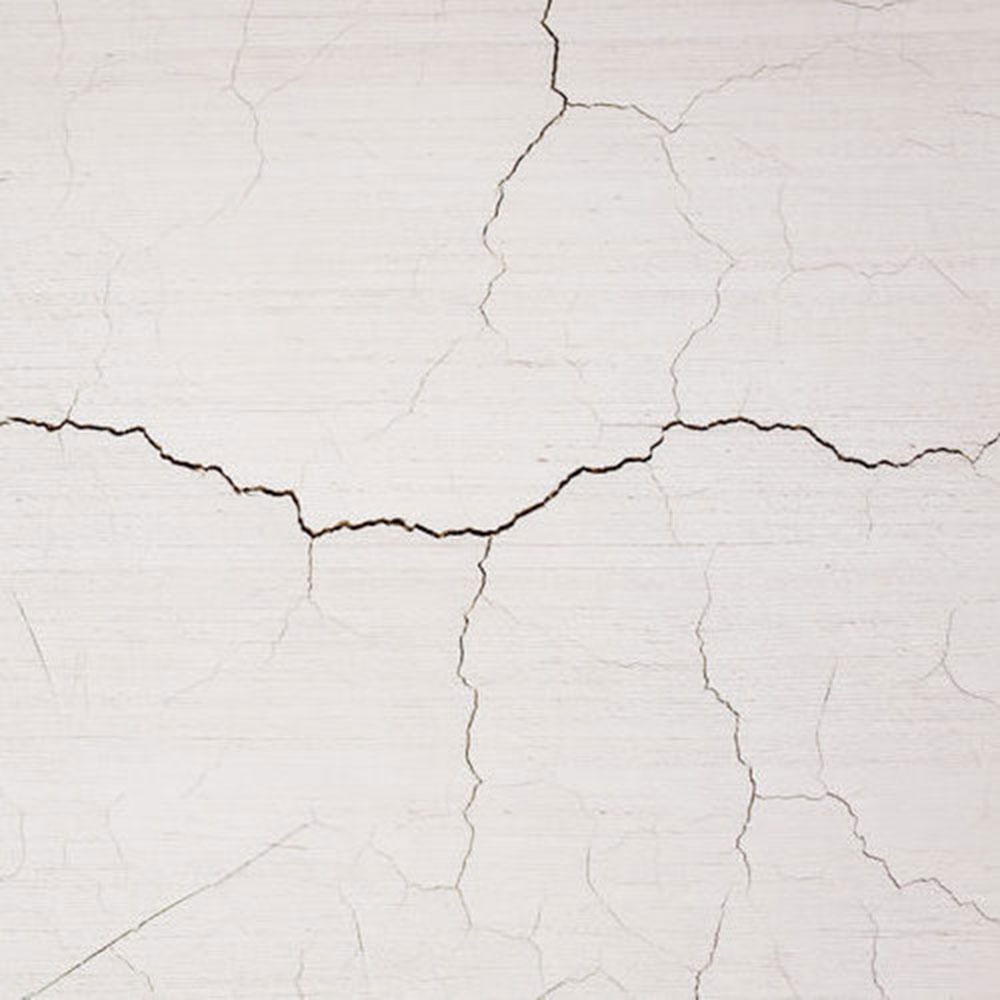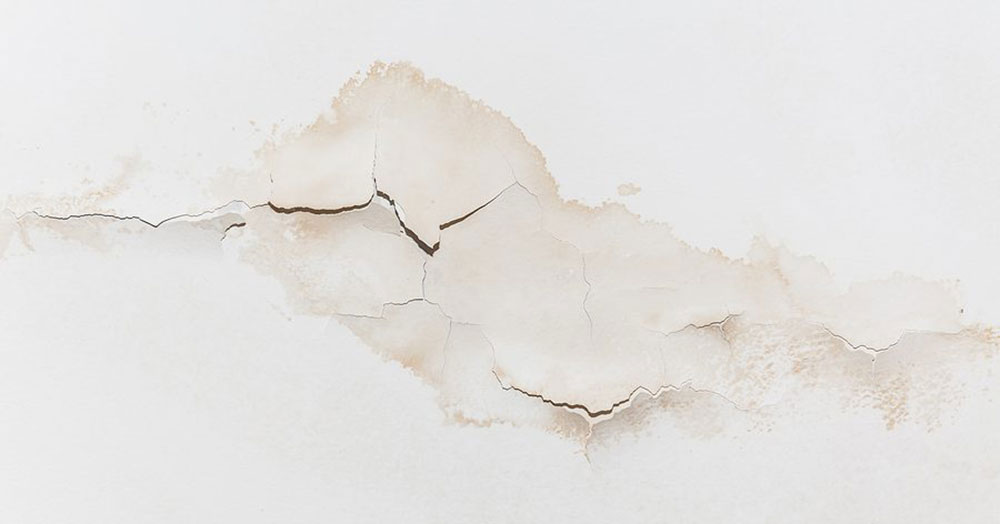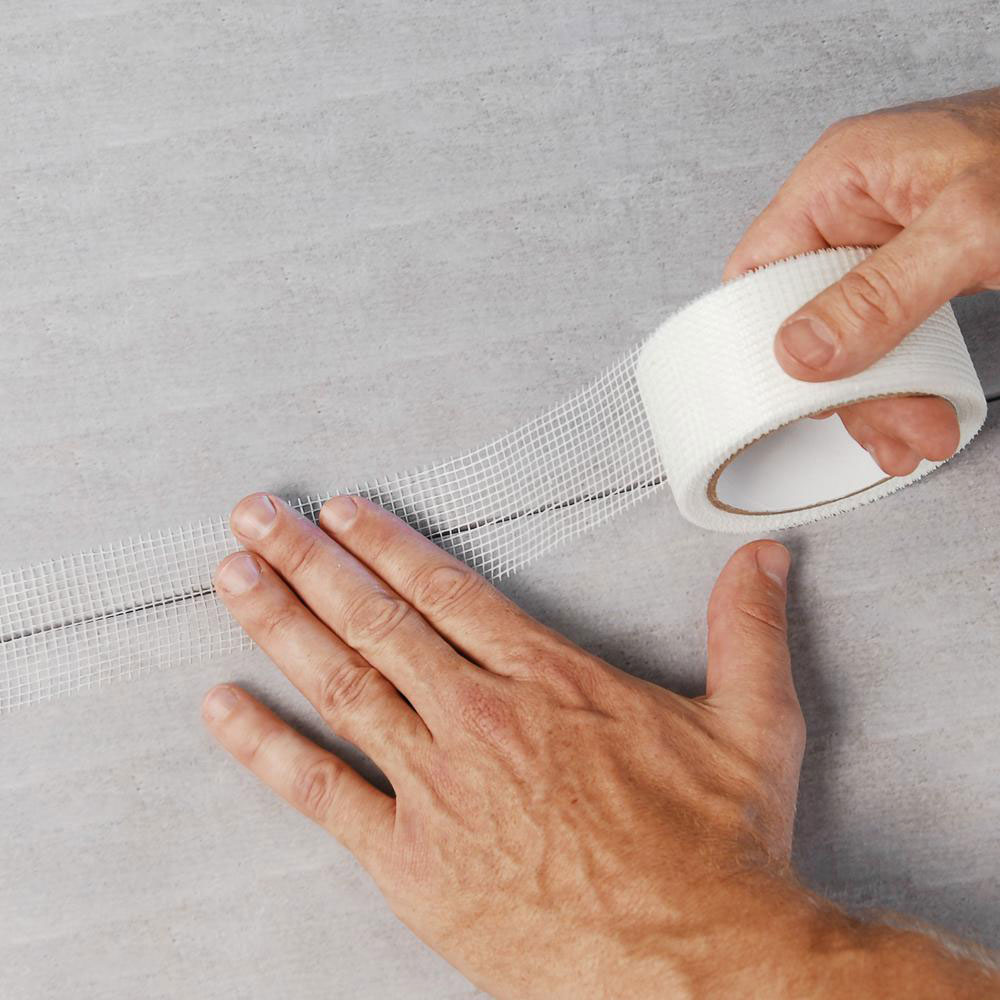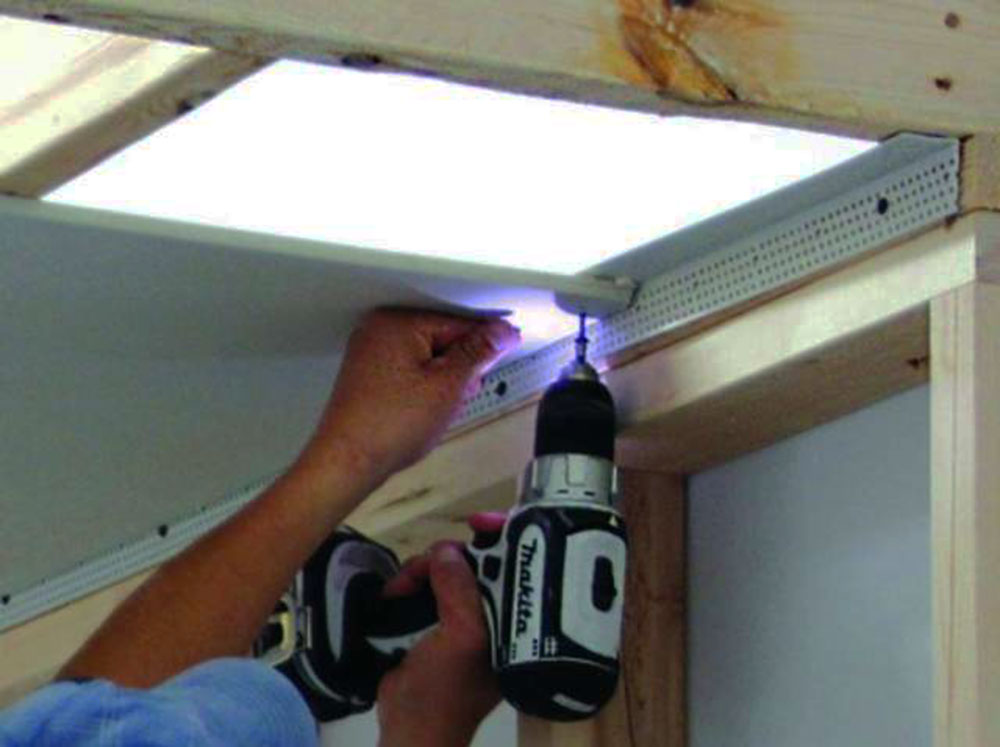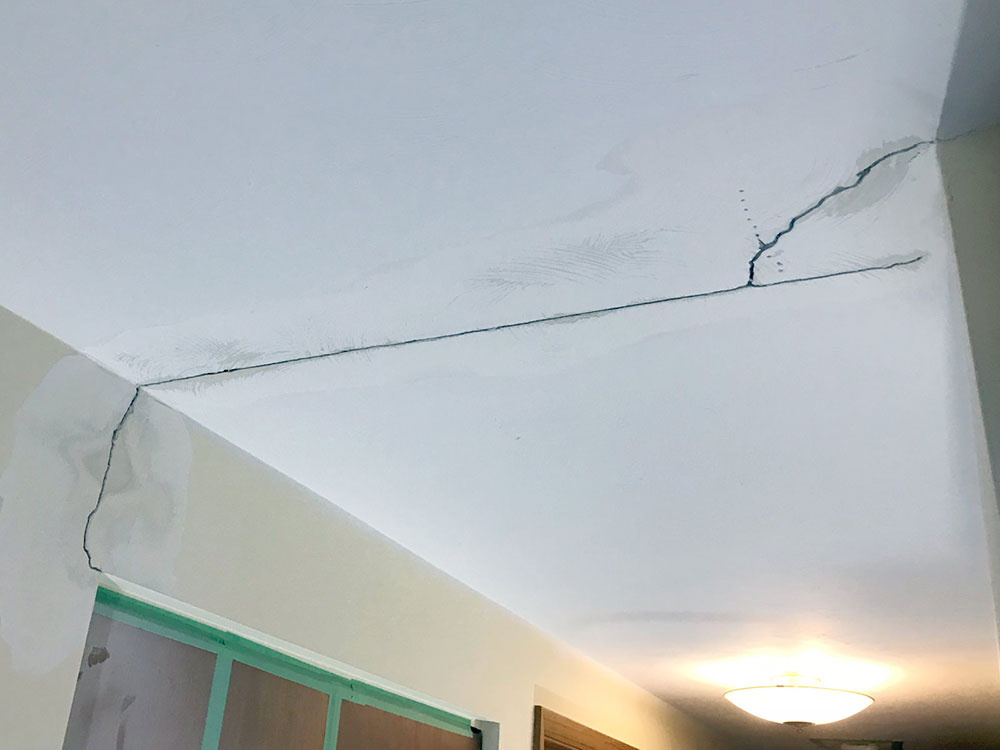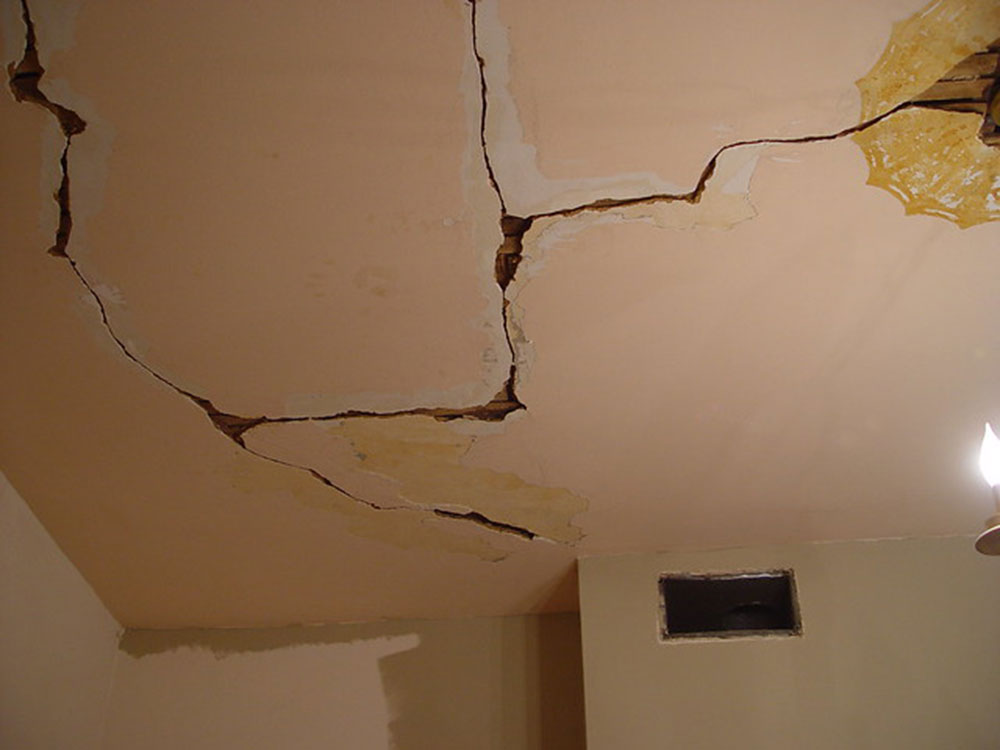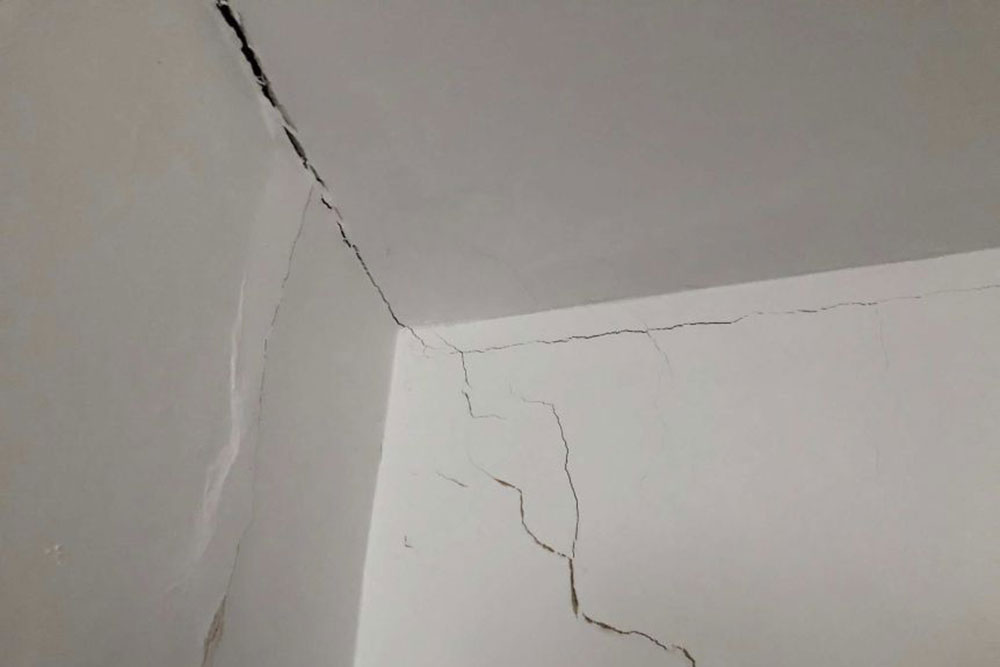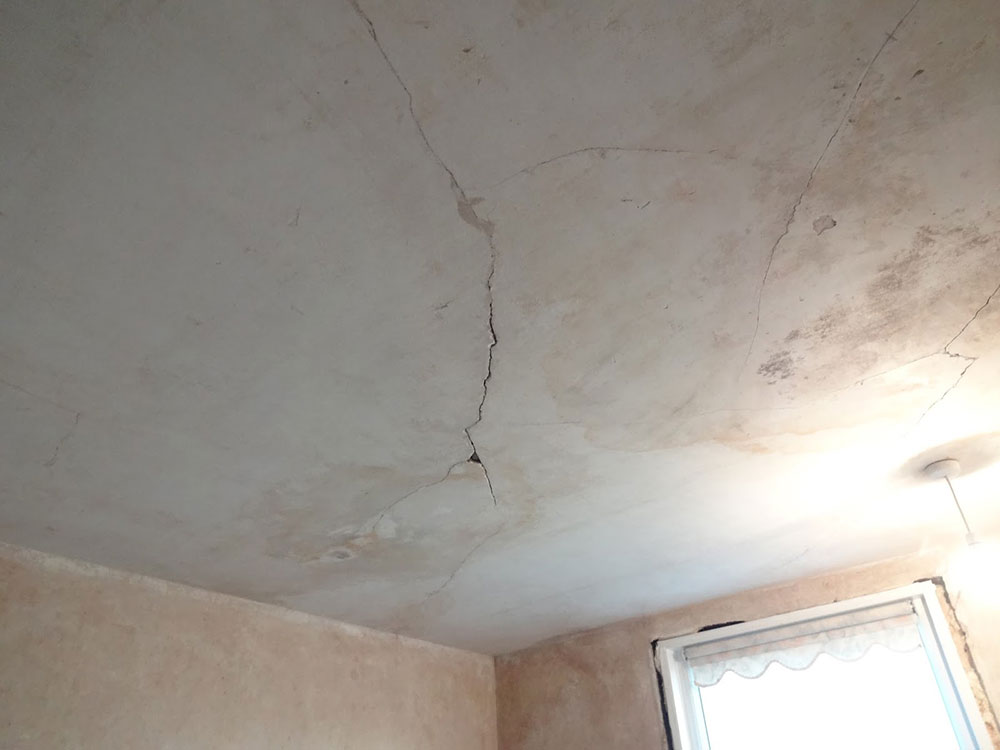Advertisement
Heads up! Next time you glaze upwards and spot a zigzagging fissure sullying your smooth ceiling, hold that eye roll. Cracking up isn’t all that rare. It’s a silent alarm for dwellings often dismissed until the spider-web thread turns into a gaping gorge. Diving deep into what causes cracks in ceilings, we’ll excavate the mysteries sketched on your overhead canvas.
Ever ponder why these unsolicited ceiling tattoos appear—and how they multiply? From the subtle house settling whispers to the more overt drama of structural damage, we chart the culprit’s map. Buckle in; we’re set to unravel the knotty ties between thermal expansion, moisture damage, and that pesky plaster crack pointing like an accusing finger.
By curtain call, you’ll be equipped with the smarts to preempt home structure weak spots and ace those DIY repair techniques. Plus, professional plaster repair won’t be a cryptic concept anymore. We aim to morph you from spectator to savant on the battlefield of ceiling renovation.
What Causes Cracks in Ceilings?
Moisture
Heavy moisture is one of the main reasons for ceiling cracks. If you’re on the ground floor, moisture could be coming from the floor above. If you’re on the top floor, there could be damage to the roof.
Foundation settling
Houses need a few years to settle after they’re built. Even after that, they continue to settle. Weather changes can cause the foundation to expand and contract. It can change the wall-to-ceiling alignment and can result in cracks in the ceiling.
Too much weight
The space above the ceiling, be it an attic or a room, might bear too much weight. Bathrooms need specific support systems to carry the weight of all the appliances they hold. If everything is not upheld correctly, it could lead to cracks in the ceiling or even sagging.
Truss uplift
Roof trusses can cause cracks in ceilings too. Trusses sit on top of wall plates. When wood rafters expand and contract with heat and humidity, the ceiling joists are pulled away from the wall plates. That can form cracks in the ceiling.
Not all ceiling cracks are the same. The cause and solution will depend on the shape, size, and location of the crack in question. Here are some of the most common types of ceiling cracks and how to fix them.
Types of Ceiling Cracks and How to Fix Them
Fine, straight crack
If the drywall joint wasn’t properly taped or mudded, the tape will not stick to the drywall. As a result, there could be a crack at the edge of the tape.
This isn’t a safety hazard, so you can ignore this type of crack if you don’t mind looking at it. You can cover it by applying a bit of drywall compound under the tape and trying to adhere it to the wall.
Spider web cracks
These cracks have a center point and the cracks spread out from it like a spider web. You will find spider web cracks in ceilings, walls, and even floors. They are quite common. If the cracks are small, you don’t need to worry. If they are over 1/16-inch wide, however, you could be facing a structural problem.
Cover them with a thin layer of drywall compound. Sand off the old compound and apply more on top.
Discolored crack
If the crack is yellow or brown, there is probably water involved. If there is a leak upstairs, water can come all the way down to the ceiling’s drywall panel. The joint tape will loosen, and it will create an ugly crack. Before you get to fixing the crack, figure out what is causing it and fix that leak.
Scrape off the loose tape and re-tape the joint. Use a drywall repair kit or paper tape and joint compound. If your ceiling is textured, you can go down to your nearest home improvement store and buy an aerosol texture product. Use it to cover the re-taped joint and fix the texture.
Cracks caused by truss uplift
This type of ceiling cracks appears on the point where the ceiling and the wall intersect. Roof trusses can move due to changes in temperature and humidity.
This is a common occurrence. There is nothing to worry about, as your home is built to withstand such shifts. You don’t need to repair it, but if you want to, there is only one way to do that.
Remove the nails or screws from the edges of the drywall panels. Reattach them to clips or blocks installed on the top of the interior wall plates. This can get a bit difficult, so it’s best to hire a professional builder.
Matching vertical cracks
Cracks that run in a line on the ceiling and continue down to the wall are dangerous. There is probably some structural damage to the house. It could be a weak wall stud or the result of an earthquake.
Contact a structural engineer or a builder to assess the situation and suggest further action.
Large cracks and a bowed ceiling
It gets serious when your ceiling is sagging. There is probably something heavy above the ceiling that is causing it to shift. You can fix that by moving the heavy object. There could also be damage to the support structure.
There is no quick fix for this one. You need to contact a structural engineer or a contractor and ask them to assess the situation. Act as soon as you notice something is off to avoid a safety hazard.
Ceiling cracks accompanied by wall cracks
If the cracks in the ceiling are accompanied by cracks in the wall, the house could be in the process of settling. Any house will settle with time. That can create cracks in walls and ceilings, and sometimes above doors and windows, and in corners. These can be re-taped, but they might reappear later on.
If the gaps are wider than 1/8-inch, there could be a problem and you should consult a builder.
Ceiling cracks in plaster ceilings
Cracks in plaster ceilings may be caused by moisture or movement. Plaster is very rigid, so the smallest movement can make a crack. It is usually one of two things: the house is settling or there are temperature and moisture fluctuations in the attic.
You can repair small cracks with plaster. Bigger sections will require replacing them with drywall.
FAQ on cracks in ceilings
Why do I see cracks in my ceiling?
Darn thing could be settling – not uncommon if your home’s still got that new-house smell or if it’s racking up birthdays. Settling houses mean shifting, and that’s a recipe for those hairline ceiling fissures. Not always sinister, but worth an eyeball to size ’em up.
Is it serious if my ceiling has cracks?
Depends on the vibe they’re giving off. Thin, straight lines? Probably just your house doing a bit of a stretch. But if we’re talking more map of the London Underground than fine lines, it’s time to call in a pro. Could be structural damage or even foundation issues.
Can water damage cause ceiling cracks?
You betcha. Picture this: Water gets cozy, setting up camp where it’s not invited. Result? Moisture damage invites plaster cracks to the party. A sneaky roof leak could turn your ceiling into a crack canvas. So, yeah, a peep at your roof’s health is key.
Do cracks in ceilings mean foundation problems?
It’s a possibility, can’t sugarcoat that. When your foundation plays the shrink-and-swell game due to moisture or soil shenanigans, it’s like giving your home an unwanted chiropractic adjustment. Cue the ceiling fissures. Get a foundation expert to suss it out for peace of mind.
How does temperature affect ceiling cracks?
Think of your home as a breathing entity. When it’s hot, materials expand; chilly times, they contract. This game of thermal tag can stress out your ceilings over time, thus the thermal expansion and contraction might just etch those stress signatures up above.
What should I do if I find a crack in my ceiling?
Play investigator first. A scrutinizing look will tell you if a paint job or a DIY ceiling repair is enough. But hey, when in doubt, getting expert advice is the move. In the ceiling biz, you’re better safe than sorry.
How can I prevent cracks in my ceiling?
Think defence. Regular home maintenance, keep your home’s structure hydrated during dry spells, and vent humidity. Think stable temps to mitigate thermal expansion woes. And, quality materials and construction go a long way. It’s all about that foresight.
Can DIY fixes solve ceiling cracks effectively?
DIY can be your buddy for the small fry cracks. Some spackle, some sanding, and a bit of elbow grease can see you through. But if the cracks look menacing or you’re unsure, it doesn’t hurt to call in a professional plaster repair job.
When do ceiling cracks indicate an emergency?
When things escalate from “Oh, that’s new” to “Oh no, that’s moving!” – act fast. Structural damage signs, like widening or sagging cracks, or if they’re joining forces with wall cracks, that’s your cue. It screams, “Help needed, pronto!”
How often should ceilings be inspected for cracks?
Casting an eye over your ceiling every once in a year should do it. It’s like being on neighbourhood watch but for your plasterboard. Being proactive could save you from a heap o’ trouble and keep your ceilings solid and crack-free.
Conclusion
So, we’ve journeyed through the winding paths and tight alleyways exploring what causes cracks in ceilings. It’s quite the eclectic list, isn’t it? From the subtle hint of a home’s foundations settling, right over to the more forthright callouts of moisture intrusion or thermal expansion—these are your culprits.
And, it ain’t just about spotting ’em. Prevention is the golden ticket. A bit of regular home maintenance and staying ahead of the game with professional inspections, might just be the secret sauce to keep those ceilings crack-free.
Remember, those sneaky fissures in your overhead landscape are more than aesthetic hiccups. They’re signposts, clues that something’s up, or shifting. Literally. Now, equipped with know-how, whether it be a DIY ceiling repair or calling in the repair cavalry, you’re ready.
Seal it, paint it, or get that foundation checked. Keep your indoor sky pristine and, well, just part of the background. Stay vigilant. Stay informed. Keep those roofs over your heads—not in your conversations.
If you enjoyed reading this article about what causes cracks in ceilings, you should read these as well:

